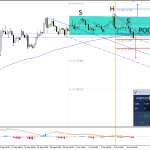You do not get paid for knowing yesterday’s news… unless you work as a pundit. In that case you just need to go on TV and repeat what you read that morning in the Wall Street Journal or the FT. Like the “B” student in a class, you learn the conventional wisdom and repeat it. You can sound very confident — even smug — and seem right because you are describing the past.
For traders and investors, yesterday’s news is history — already reflected in market prices.Unlike other aspects of life, being well-informed provides you no edge. It might even be a disadvantage. The post-hoc explanations for market moves twist theory to fit perceptions. As humans, we crave to make sense of everything; we are very creative in finding explanations.This may build a view of the world that is quite wrong.
Finding an investing or trading edge requires an accurate view of the future, not the past.You can do this in several ways:
- Determine the conventional wisdom
- Find important mistakes in the popular, oft-repeated viewpoints
- Consider what sectors and stocks would benefit if there is a return to reality
Examples
If you start asking yourself the right questions, following the points listed above, you will find some fresh ideas.Here are a few examples:
Information — There are many important facts that are not widely known. Worldwide demand for energy has increased every year, more this year than last.Using energy prices as a gauge for the world economy is too pessimistic. Bank exposure to energy companies is relatively modest and reserves are much better than in 2008.
If you accept this information, you can shop economically sensitive companies and banks. This information is hiding in plain sight.












Leave A Comment